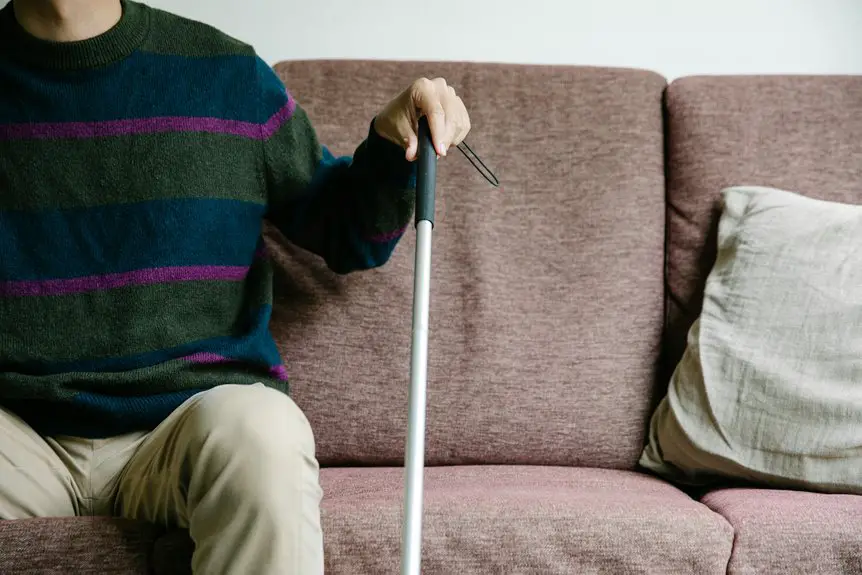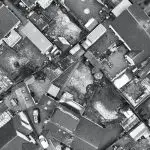You’ll generally need 1.5 to 2.5 yards of fabric for chino pants, depending on your size and fabric width. Smaller sizes use less fabric, about 1.5 yards, while larger sizes may need closer to 2.5 yards. Wider fabric widths can reduce how much you need. Also, keep in mind design details and extra fabric for pattern matching or mistakes. If you want to nail the perfect fit and fabric choice, there’s more to take into account beyond just yardage.
Table of Contents
Key Takeaways
- Men’s chino pants typically require 1.5 to 2.25 yards of fabric depending on waist size and fabric width.
- Women’s chino pants usually need 2 to 2.5 yards with 45-inch fabric, less with wider fabric widths.
- Fabric width impacts yardage; wider fabrics reduce the length needed to fit pattern pieces.
- Add 10-15% extra fabric for pattern matching, cutting errors, and fabric shrinkage prevention.
- Pre-wash fabric and consider fabric type (cotton twill or blends) for durability and comfort.
Understanding Fabric Width and Its Impact on Yardage
When choosing fabric for chino pants, you’ll need to take into account the fabric width carefully because it directly affects how much yardage you’ll require.
Fabrics come in various widths, typically ranging from 44 to 60 inches. Wider fabric means you can fit more pattern pieces side by side, reducing the total yardage needed. If you pick a narrower fabric, you’ll likely need more length to accommodate all the pieces.
Also, consider the fabric’s pattern or nap direction; some designs require all pieces to be cut in the same direction, which may increase fabric consumption regardless of width.
Standard Yardage Requirements for Men’s Chino Pants
When planning your chino pants, you’ll need to contemplate fabric length based on your size since larger sizes require more yardage.
Keep in mind that the pattern and fit you choose also affect how much fabric you’ll need.
Understanding these factors helps you buy just the right amount without waste.
Fabric Length per Size
Calculating the fabric length for men’s chino pants depends largely on the size you’re making.
For smaller sizes like 28 to 30 waist, you’ll generally need about 1.5 to 1.75 yards of fabric.
As you move up to medium sizes, such as 32 to 34 waist, plan on around 1.75 to 2 yards.
Larger sizes, from 36 to 40 waist and beyond, often require 2 to 2.25 yards to accommodate longer legs and wider measurements.
Keep in mind that these estimates assume standard fabric widths of about 45 inches.
If your fabric is wider, you might need less yardage.
Always measure carefully and consider extra fabric for hemming or alterations, but these guidelines should give you a solid starting point for planning your chino pants project.
Pattern and Fit Impact
Because the pattern and fit you choose greatly influence fabric needs, it’s important to factor them into your yardage calculations for men’s chino pants. Slim or tapered fits generally require less fabric, while relaxed or wide-leg styles need more. Complex patterns with multiple panels or pleats can also increase fabric consumption. Here’s a quick guide to standard yardage requirements:
| Fit Type | Yardage Needed (yards) |
|---|---|
| Slim Fit | 1.5 – 1.75 |
| Regular Fit | 1.75 – 2.0 |
| Relaxed Fit | 2.0 – 2.25 |
| Patterned/Panel | 2.25 – 2.5 |
Always add extra fabric for pattern matching or alterations. This guarantees you won’t run short during sewing.
Yardage Needed for Women’s Chino Pants
If you plan to sew women’s chino pants, you’ll need to take into account the fabric yardage carefully to secure a proper fit and style.
Typically, you’ll require about 2 to 2.5 yards of fabric if you’re working with standard 45-inch fabric width. If your fabric is wider, say 60 inches, you might need closer to 1.5 to 2 yards.
This range covers most regular lengths and waist sizes without including extra fabric for pattern matching or design details.
Remember to check your specific pattern instructions because some styles with added features like pleats or cuffs may demand more fabric.
Adjusting Fabric Yardage for Different Sizes
When you choose larger sizes for your chino pants, you’ll need extra fabric to accommodate the increased measurements.
Smaller sizes require less fabric, so it’s important to adjust your yardage accordingly.
Understanding how size impacts fabric needs helps you plan better and avoid shortages.
Size Impact on Yardage
Although fabric requirements can vary, your size plays a crucial role in determining how much yardage you’ll need for chino pants. Larger sizes generally require more fabric to accommodate wider hips, longer legs, and additional ease for comfort.
When planning, consider these factors:
- Waist and hip measurements directly affect the width of fabric needed.
- Inseam length influences the overall yardage for the pant legs.
- Extra ease allowances add fabric to guarantee a comfortable fit.
- Design details like pleats or cuffs may increase fabric consumption.
Fabric Requirements by Size
Estimating fabric yardage for chino pants varies considerably across sizes, so you’ll need to adjust accordingly to avoid shortages. Smaller sizes generally require less fabric, but as sizes increase, the yardage needed grows due to wider waistbands, longer inseams, and more generous cuts. Planning ahead helps you buy the right amount without wasting material. Here’s a quick guide to fabric requirements based on size:
| Size | Fabric Yardage (45″ width) |
|---|---|
| Small (28-30″) | 1.5 yards |
| Medium (32-34″) | 1.75 yards |
| Large (36-38″) | 2 yards |
| XL (40-42″) | 2.25 yards |
Adjust these estimates if your fabric width differs or if you prefer a looser fit.
How Style and Design Affect Fabric Usage
Because different styles and designs require varying amounts of fabric, you need to take these factors into account carefully before purchasing.
Different styles and designs demand different fabric amounts, so consider these carefully before buying.
The cut and details of your chino pants directly impact fabric usage. Consider these points:
- Fit: Slim or tapered pants use less fabric than wide-leg or relaxed fits.
- Length: Full-length pants need more yardage than cropped or ankle-length styles.
- Details: Features like pleats, cuffs, or large pockets increase fabric requirements.
- Pattern Matching: If using patterned fabric, allow extra for alignment.
Choosing the Right Fabric Type for Chino Pants
After considering how style and design affect fabric needs, you’ll want to focus on the type of fabric itself.
For chino pants, cotton twill is the classic choice because it’s durable, breathable, and comfortable. You might also consider cotton blends with a bit of spandex if you want extra stretch and flexibility.
Lightweight fabrics work well for summer, while heavier twills add warmth for cooler months. Avoid overly stiff or delicate materials; chinos need to hold their shape without restricting movement.
When selecting fabric, think about the drape and texture you prefer—smooth and crisp or soft and worn-in.
Choosing the right fabric guarantees your chinos look great and feel comfortable, so pick one that suits your lifestyle and climate.
Tips for Pre-Washing and Preparing Fabric
Before cutting your fabric, make certain to pre-wash it properly to prevent shrinkage and color fading later on. This step guarantees your chino pants fit perfectly after the first wash.
Follow these tips for best results:
- Wash your fabric in cold water to preserve color and prevent excessive shrinking.
- Use a gentle cycle or hand wash to avoid stressing the fibers.
- Avoid fabric softeners as they can affect fabric texture and dye absorption.
- Dry your fabric flat or hang it to dry, steering clear of high heat that may cause distortion.
Taking these precautions means your fabric will be stable and ready for accurate cutting and sewing, helping you achieve the perfect chino pants fit and finish.
Calculating Extra Yardage for Pattern Matching and Errors
When you cut fabric for chino pants, always add extra yardage to account for pattern matching and possible mistakes.
If your fabric has stripes, plaids, or other directional patterns, you’ll need more fabric to align these designs perfectly across seams.
Even solid fabrics might require extra material to allow for cutting errors, shrinkage, or fabric flaws. A good rule of thumb is to add 10-15% more fabric than your basic measurement.
This buffer guarantees you won’t run short if you need to reposition pattern pieces or fix cutting slips.
Remember, it’s better to have a little leftover fabric than to fall short mid-project.
Planning for extra yardage saves time, stress, and assures a polished final look for your chino pants.
Where to Buy Quality Fabric for Chino Pants Projects
Although finding the right fabric can feel overwhelming, knowing where to buy quality material for your chino pants makes all the difference.
Finding the perfect fabric for your chino pants starts with knowing where to shop for quality materials.
You want fabric that’s durable, comfortable, and breathable. Here are four great places to start:
- Local fabric stores – You can see and feel the fabric before buying, ensuring it meets your expectations.
- Online specialty shops – These offer a wide range of chino-specific cotton twills and blends.
- Wholesale fabric suppliers – Perfect if you need larger quantities at better prices.
- Upcycled or sustainable fabric retailers – Great for eco-conscious projects with unique material options.
Frequently Asked Questions
What Sewing Tools Are Essential for Making Chino Pants?
Sewing staples like sharp shears, sturdy scissors, and a strong sewing machine save your sanity. You’ll need measuring tape, marking chalk, pins, and a pressing iron to perfect precise pleats and seams for your chino pants project.
How Long Does It Typically Take to Sew a Pair of Chinos?
You’ll typically spend 4 to 6 hours sewing a pair of chinos, depending on your skill level and machine speed. Don’t rush—taking your time guarantees neat seams and a comfortable, well-fitting final product.
Can I Use Stretch Fabric for Chino Pants?
Imagine your chinos as a second skin, moving with you. Yes, you can use stretch fabric—it adds comfort and flexibility, making your pants feel alive, adapting effortlessly to every step and turn you take during your day.
What Type of Thread Is Best for Chino Pants?
You’ll want to use a strong, durable polyester or polyester-cotton blend thread for chino pants. These threads resist wear and tear well, ensuring your seams stay secure and your chinos look sharp over time.
How Do I Care for Homemade Chino Pants After Sewing?
Imagine you just finished sewing your chinos; you’ll want to wash them gently in cold water and hang dry to prevent shrinking. Avoid harsh detergents and ironing on high heat to keep them looking sharp and lasting longer.
- Stretch vs. Non-Stretch Chino Fabric: Which Is Better for You? - June 20, 2025
- An Overview of China’s Flexible PCB Fabrication Capabilities - June 20, 2025
- Sourcing and Using Liberty Crepe De Chine Fabric - June 20, 2025







